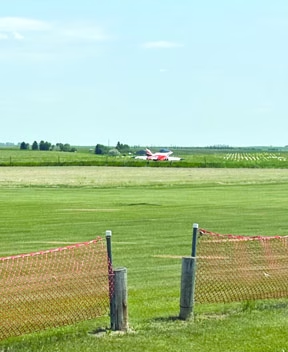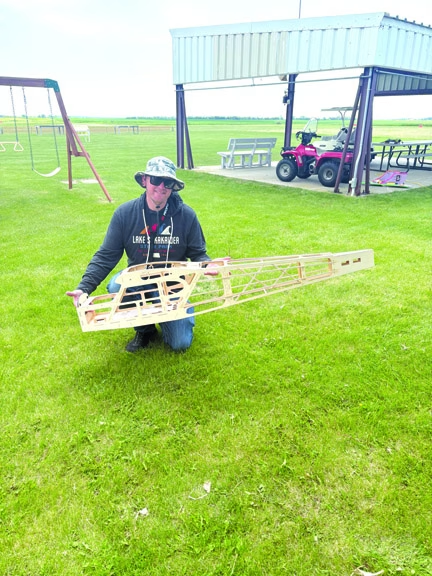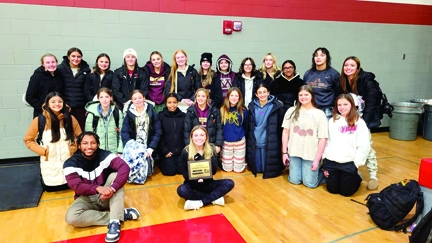
The Minot Aircraft Modelers Club and Field is widely regarded as one of the premier flying facilities for model aircraft in the upper Midwest. Not ten miles east of Minot AFB, nestled in a beautiful, quiet, and country setting, the modelers club boasts two 600-foot grass runways ideal for flying a wide variety of model aircraft. The site is well-equipped to accommodate families and visitors, featuring an RV park, a playground for children, a covered spectator pavilion, and clean shower and bathroom facilities. With rural water on-site and thoughtfully maintained grounds, it offers a comfortable and inviting environment for both pilots and spectators alike.
The beginner friendly club offers an inclusive pilot training program designed to introduce newcomers to the world of remote-controlled model aviation. This program provides participants with a free three-month trial membership, which includes everything needed to start flying: airplanes, batteries, transmitters, and one-on-one instruction from experienced club members. The goal is to make the learning process as accessible and enjoyable as possible, allowing beginners to quickly gain confidence and skills in a supportive environment.
Once signed up for the pilot program, training begins with a thorough ground briefing that covers the basics of aerodynamics, flight controls, and the principles behind how an airplane flies. Students learn the functions of control surfaces such as ailerons and elevators and how to manipulate the transmitter sticks to maneuver the plane. To ease the learning curve, the club flight instructor’s uses a specialized flight simulator that replicates the experience of flying from the pilot’s perspective on the ground. This simulator allows students to practice takeoffs, landings, and basic flight maneuvers virtually, where mistakes can be easily corrected by restarting the simulation.
Once students are comfortable with the simulator, they move on to actual flying lessons using club aircraft. Each airplane is equipped with dual wireless controllers so that the instructor can instantly take control if needed, ensuring safety during every flight. The initial flights focus on mastering takeoffs and basic maneuvers at a safe altitude, followed by lessons in taxiing the plane on the ground and ultimately learning to land properly—often the most challenging skill to master due to the pilot’s perspective and the precise control needed. The remote-flight program is backed by the Academy of Model Aeronautics (AMA), which provides insurance coverage and educational resources for members. This well-structured approach has helped many beginners transition into confident, safe pilots, fostering a growing community passionate about model aviation.
The club recently hosted one of its biggest events of the summer, opening its gates to the public for a full weekend of flying, food, and family fun. Normally a members-only facility, the club welcomed visitors to experience all the great things that come with aeronautics. The event showcased an impressive variety of model aircraft, ranging from vintage WWII replicas to modern aerobatic planes. Pilots spent the day flying stunts and showing off detailed aircraft built from lightweight materials and factory-finished designs.
Mr. Zac Heskin, the club president, has been flying for about 27 years. He explained that starting out, someone might pay upwards of $200 to get their aircraft built and ready to fly. He showcased some of his personal planes and explained they can be as large as a 10½-foot wingspan. Most planes are wooden and covered in Ultra Cote, which is a shrinkable plastic that is considered lightweight and perfect for covering a model aircraft! He also showed an unfinished plane made from 3D-printed pieces that had been glued together. Mr. Heskin provided a look into his remote as well. His personal remote can hold up to 250 remote-controlled (RC) aircraft! He demonstrated the ability to switch between aircraft before taking his own plane up for a flight.
When explaining the fuel used for his personal aircraft, Mr. Heskin said, “I use kerosene because it’s cleaner.” Kerosene is typically found in RC planes with turbine engines. Electric-powered planes are also a viable option, as they offer responsive control and easier operation. Electric planes are generally recommended for beginner fliers, while fuel planes are more suited to those with more experience. The downside is that electric planes tend to have a shorter flight time, while some fuel planes can fly for an average of 6–7 minutes. These aircraft must be flown in designated areas like the Minot Aircraft Modelers club grounds. Park Flyers are lightweight, electric-powered aircraft with wingspans under 60 inches, making them easily maneuverable and ideal for flying almost anywhere, Mr. Heskin explained.
The Minot Aircraft Modelers club offers a welcoming and well-equipped environment for both seasoned pilots and newcomers to enjoy the thrill of model aviation. With its premier flying facilities, comprehensive training program, and supportive community backed by the AMA, it provides a safe and accessible way for anyone to get involved in this exciting hobby. The recent public event highlighted the club’s dedication to sharing their passion, showcasing a wide range of aircraft and flying styles while fostering a family-friendly atmosphere. Whether you’re interested in electric park flyers or large-scale fuel-powered planes, Minot Aircraft Modelers stands out as a vibrant hub for enthusiasts of all ages and skill levels to learn, fly, and connect.
For any more information on the Minot Aircraft Modelers club, events, or membership, visit https://www.minotaircraftmodelers.com/ .













